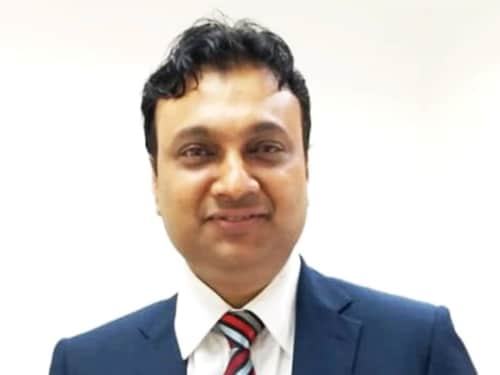Epilepsy in India: A burning problem
Dr Vikash Agarwal, DM Neurology, Senior Consultant Neurologist, Gleneagles Global Health City, Agarwal Neuro Clinic


Epilepsy is a very burning problem in our country. In a recent study conducted in Kerala, the prevalence of active epilepsy is 4.7 per 1000 population. There are different factors which decides the prevalence of epilepsy and these factors are different when we compare urban vs. rural population, for example: In urban population there may be a vascular risk factors and symptomatic epileptic risk cases or more factors related to tumors, whereas in rural population we see more of infections like neurocysticercosis and brain calcification due to neurocysticercosis or tuberculosis causing epilepsy or structural epilepsy. There is a huge variation but in general in physique the prevalence of epilepsy is somewhere around 5 to 10 per 1000 population. This presentation is focused on the topic of:
In this particular classification it has been said that, partial epilepsy or the epilepsy which starts from a point in the brain, better to call it as focal epilepsy. In this focal epilepsy a person with epilepsy can have a retained consciousness or the person may lose consciousness, what we call it as focal epilepsy with impaired awareness or focal epilepsy with retained awareness.
As a host when in the condition of generalized epilepsy which used to earlier called as idiopathic generalized epilepsy, better to call it as genetic generalized epilepsy (GGE), even if it is starting from one significant point in the brain, the epileptogenic foci is quickly recruiting several circuits in both the brain hemisphere causing the person to fall down or having a very big generalized epilepsy or what was previously told as grandmal seizures.
Having understood of these two different types of epilepsy whether focal epilepsy or generalized epilepsy, we need to understand that large group of patients are structural or symptomatic epilepsy, which means that there is a change or a problem in the brain circuitry or in the structure which causes this particular type of epilepsies either focal or generalized.
So in this regard it is very important to understand the etiological factors in our country. The most important etiological factor is infection neurocysticercosis or tuberculosis, which is maybe responsible for large group of patients with epilepsies.
When we start treating the patients with epilepsies, almost 70% of the people, they will get what we call it as epilepsy resolved. These peoples with after several period of time with no seizures can withdraw the use of medicines. Among these patients about 30% of the patients turned into drug refractory epilepsy.
Drug refractory epilepsy: If the epilepsy is not under control Inspite of using appropriate or an adequate drug for an adequate period of time, it is called as drug refractory epilepsy.
With the advent of newer aids, it has been understood that if we add newer antiepileptic medications (also called as antiseizure medication), the differences in controlled epilepsies or epilepsy in rhythm vs. drug refractory epilepsy has not come down. It has almost staged 70% vs. 30%.
But still there is a lot of hope now for these drug refractory epilepsies with various modalities of treatment we can give better care and give them better quality of life.
The goal is not to treat the patient epilepsy alone but it to provide patient eccentric care, in which the physician should able to give better quality of life considering several factors which are associated, not only the medications factor but the physician should also consider the cost of the treatment, the social factors, the care giver factors and community attitude towards the problem in general.
How to decide which medicine to choose for a particular patient?
This largely depends on the type of epilepsies by which physician is dealing with. If the physician is dealing with the focal epilepsy, treatment starts with oxcarbezepine or lamotrigine or tropazam. Oxcarbezepine and carbamezipine has been the first line treatment for focal epilepsies, but with the advent of newer antiepileptic drugs like Lacosamide, the physicians are using it as a monotherapy. The effectiveness of lacosmide is same but in terms of side effects they are safe, also their interaction with other medication is less.
Other aspects of choice of medications:
One of the most important aspects is phamacoeconomics. Previous generation drugs used by rural populations are very costly, patients are not able to afford it or continue the treatment which leads to poor compliance: in such cases epilepsy will not get controlled and such patients can be labeled as pseudo refractory (1 month they are taking medications and their seizures are under control and another month they are not taking medication because they don’t have the resource). Therefore Phynetoin is the very cheap good drug used to treat seizures but it has several side effects.
Disclaimer: The views, suggestions and opinions expressed here are the sole responsibility of the experts. No Forbes India journalist was involved in the writing and production of this article.
First Published: Sep 16, 2020, 18:14
Subscribe Now